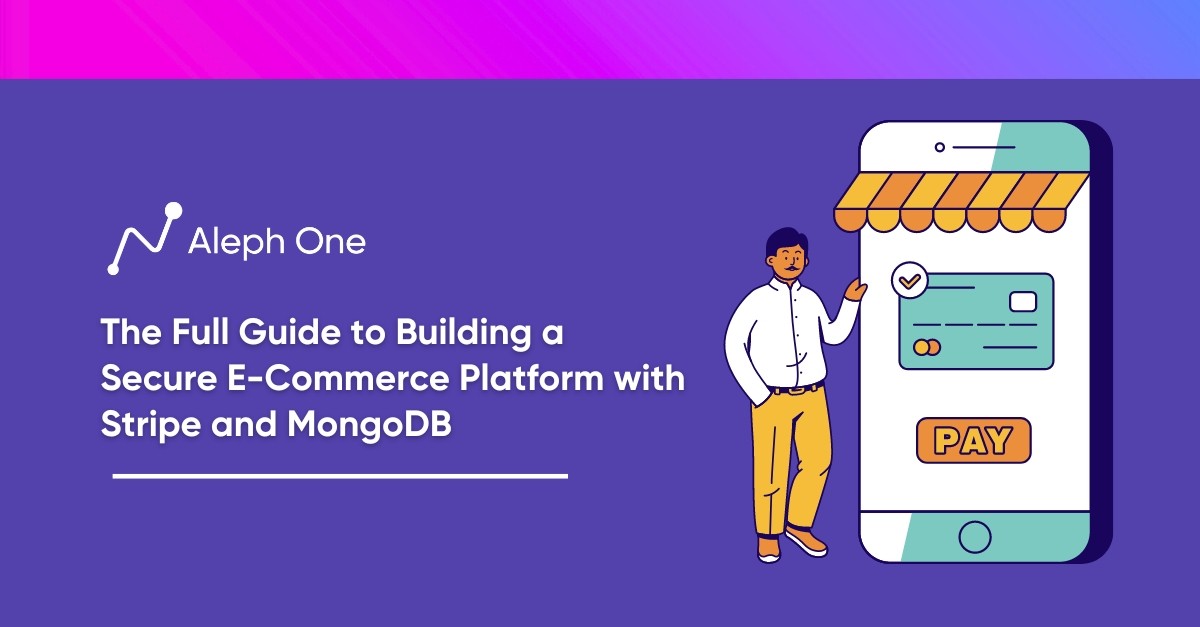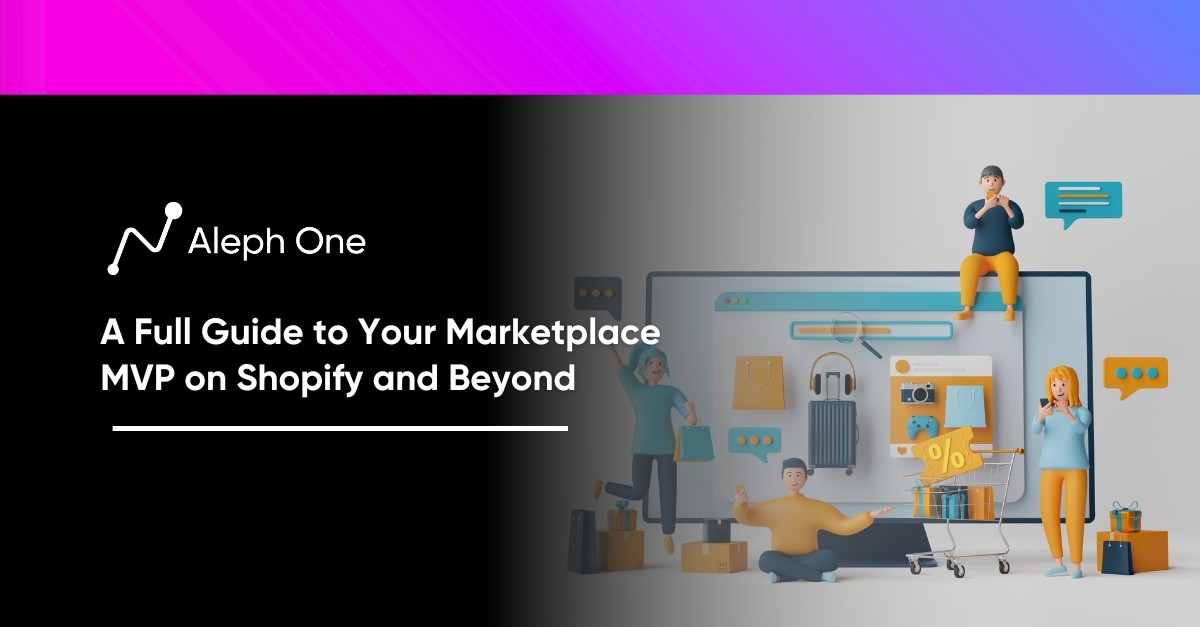Let’s work together to build something amazing. Share your project details and our team will reply to figure out the next steps to your success.

Creating a secure and thriving online platform is paramount to success in the fast-paced realm of ecommerce, where consumer demands, and cyber threats are ever-evolving. Discover the perfect partnership for ecommerce excellence as we unveil the ultimate guide to building a secure and thriving online platform using the formidable combination of Stripe and MongoDB. Stripe, a leading payments platform, simplifies transactions with its unified API, extensive currency support, and advanced fraud detection system. MongoDB, a flexible and scalable NoSQL database, empowers you to store and retrieve e-commerce data effortlessly. Major companies like Lyft and Postmates have achieved unprecedented success with the Stripe-MongoDB combo.
This comprehensive guide delves into secure e-commerce architecture, optimizing the checkout experience, scaling globally, and maintaining a healthy platform.

The Stripe-MongoDB Combo: A Match Made for E-commerce
Stripe and MongoDB are two technologies that create an ideal foundation for an ecommerce platform. Stripe is a payment platform that handles payment processing, billing, fraud prevention, and more. MongoDB is a popular NoSQL database that is flexible, scalable, and well-suited for ecommerce data.
The Powerhouse Combination for Ecommerce Giants
Significant companies like Lyft, Postmates, and Zoom use Stripe and MongoDB to power their payments and data layers. Stripe’s seamless integration, fraud protection, and MongoDB’s flexibility and scalability make these technologies an excellent choice for any ecommerce business.
A Unified API for Seamless Transactions
Stripe simplifies the complex world of payments by providing a single, unified API to accept payments online and in mobile apps. It handles payment methods like credit cards, Apple Pay, and Google Pay in over 135 currencies. Stripe Radar uses machine learning to detect and prevent fraud, saving businesses money and headaches. Stripe Checkout provides a customizable payment page and forms to optimize the checkout experience.
Perfect Data Storage for Ecommerce
MongoDB is a document database that stores data in flexible JSON-like documents. This schema flexibility is ideal for ecommerce platforms that need to store and combine data in different ways. MongoDB Atlas, the database as a service, can scale to petabytes of data and hundreds of millions of customers. Powerful indexing, aggregation, and query capabilities make gaining business insights from ecommerce data easy.
A Match Made in Ecommerce Heaven
Stripe and MongoDB provide a secure, scalable, and flexible ecommerce platform. Stripe handles financial transactions and security, while MongoDB stores customer data, orders, products, and more. The modular nature of these technologies means you can start small and scale up as a business grows. With this partnership, you get the benefits of enterprise-level tools without the costs and complexity.
This powerful duo gives you everything you need to build an ecommerce platform, from payments to data storage. By leveraging their capabilities, you can focus on creating the best customer experience instead of building infrastructure. For any ecommerce startup, this Stripe-MongoDB combo should be at the top of the technology stack wish list.
Architecting a Secure Ecommerce Platform
To build a secure ecommerce platform, you must make the right architectural decisions. First, use Stripe to handle payments and benefit from built-in PCI compliance. Stripe securely stores customer payment information, so you don’t have to. You should also enable Stripe Radar to detect and prevent fraud.
Strengthening MongoDB Security
For your MongoDB database, enable access control and encryption. Use MongoDB’s role-based access control to restrict access to sensitive data like credit card numbers. You should also use MongoDB’s encryption at rest to encrypt all data stored on disk.
The Importance of HTTPS and Security Best Practices
Your API and frontend should use HTTPS to encrypt all traffic. This protects customer data in transit and gives users confidence in your platform. You should also implement security best practices like input validation, rate limiting, and cross-site request forgery prevention.
Securing Through Modularity
A modular architecture with a clear separation of concerns will make your platform more secure. Separate your app into components like API, frontend, payments, database, caching, etc. This minimizes the impact of a compromise and makes vulnerabilities easier to fix.
Automated Testing and Integration
You should also implement automated security testing like penetration testing, vulnerability scanning, and continuous integration. This helps catch issues early and ensures all components work together securely.
Detecting and Responding to Security Events
Monitoring for security events and responding quickly if anything happens is critical. Log all access to sensitive data and payment information. Monitor for spikes in failed login attempts or strange database queries which could indicate an attack. And have an incident response plan ready in case of a data breach.
Learning From Past Breaches
Look at past breaches of companies like Ticketmaster, British Airways, and Equifax to see examples of what to avoid. Lack of PCI compliance, unpatched vulnerabilities, lack of encryption, and poor monitoring have enabled massive breaches. By making the right architectural decisions and security best practices, you can build an ecommerce platform that avoids these mistakes and keeps customer data safe.
Optimizing the Checkout Experience is Key to Sales
A frictionless checkout experience is essential for any ecommerce platform. Studies show that over 60% of shopping carts are abandoned at checkout. Using Stripe, you can optimize your checkout flow and reduce drop-off, leading to higher conversion rates and more sales.
Saved Payment Methods and 3D Secure
Saved payment methods and 3D Secure allows returning customers to checkout faster. Customers can select a previously used card with saved cards instead of re-entering their information. 3D Secure adds an additional layer of fraud protection for the merchant while allowing cardholders to authenticate themselves with their bank. Both features mean customers spend less time entering details and more time completing their purchases.
Pre-filled Forms and Smart Form Fields
Pre-filled forms also speed up the checkout. You can automatically fill in details like names, addresses, and card numbers that the customer has saved to their account. Stripe Elements uses smart form fields that suggest complete details as the customer types. This cuts down data entry and prevents errors.
The Power of a Progress Indicator
A progress indicator shows customers their checkout progress so they know how much is left to complete the purchase. This can reduce perceived friction and prevent cart abandonment. You can display progress through steps like “Shipping”, “Billing”, “Review” and “Complete”.
Catering to Every Shopper with Guest Checkout
Finally, consider offering guest checkout for customers without an account. While accounts provide benefits like saved details, some customers prefer to checkout without creating an account. With Stripe, you can allow guest checkout while utilizing fraud protection features. You can also optionally prompt guests to create an account at the end of their purchase.
Boosting Conversions Through Optimization
With an optimized checkout flow, you can turn more shoppers into paying customers. Stripe provides all the tools to speed up checkout, reduce data entry, prevent errors, and give customers visibility into their progress. By following checkout best practices, you can achieve higher conversion rates and a better overall shopping experience for your customers. The result is a win-win: customers get a frictionless purchase, and you get more sales.
How to Scale Your Ecommerce Platform Globally
To build a successful ecommerce business, you need to scale globally. Stripe and MongoDB provide the tools to expand into new markets and handle increasing traffic.
Supporting Multiple Currencies and Payment Methods
Support multiple currencies and payment methods. With Stripe, you can accept over 135 currencies and various local payment methods worldwide. Their global payment routing infrastructure ensures the best conversion rates in each market. You’ll want to store currency and payment details in MongoDB to handle dynamic pricing and subscriptions in different currencies.
Leveraging Stripe Radar’s Worldwide Detection
Enable fraud detection worldwide. As your business grows globally, fraud risk increases. Use Stripe Radar to detect fraud across borders in real-time. To determine fraud risk, radar considers over 100 factors, including IP address, device info, and billing address. By storing orders and payments in MongoDB, Radar can analyze trends across all your data to improve accuracy.
Deploying Infrastructure in Different Regions
Deploy infrastructure in different regions. For the best performance, you’ll want to deploy your application and database infrastructure in areas close to your customers. With MongoDB Atlas, you can deploy a global cluster that spans multiple regions. Requests are automatically routed to the nearest region, reducing latency. You can also isolate customer data to specific areas for compliance and latency reasons.
Drawing Inspiration From Global Giants
Study global companies for inspiration. Look for inspiration from global ecommerce leaders like Shopify, Wayfair, and Etsy. They accept many currencies and payment types and have sophisticated fraud detection and infrastructure worldwide. However, their scale today was unimaginable when they launched. Using Stripe and MongoDB to build a global platform from the start, your company can achieve similar success.
Stripe and MongoDB as Catalysts for Scalability
With the right architecture and tools, scaling globally is possible for any ecommerce startup. Stripe and MongoDB provide the payments infrastructure, data platform, and scalability to launch in new markets and handle surging traffic. By following the best practices of leading global companies, your platform can achieve worldwide success. With an experience-driven approach to ecommerce, your business can transcend borders and shape the future of online retail.
Maintainability Matters: How to Keep Your Platform Healthy
To have a successful ecommerce platform, you must keep it healthy and running smoothly. Maintainability best practices are crucial to avoiding downtime and ensuring customers have a great experience. Here are some ways you can achieve this:
1. Build Your Platform with a Modular Architecture
Separate components like payments, product catalog, cart, and shipping into distinct services that communicate via APIs. This makes each part easier to maintain and scale and isolates failures. For example, customers can still complete purchases using their cart data if your product catalog goes down.
2. Implement Automated Testing for All Components
Unit tests, integration tests, and end-to-end tests give you confidence that new code changes won’t break existing functionality. They catch issues early and speed up development. Stripe and MongoDB both provide testing tools and frameworks to validate your implementation.
3. Enable Extensive Logging and Monitoring
Track key metrics like uptime, response times, error rates, and throughput. Get alerts if anything deviates from the norm. Monitor Stripe Radar data for signs of fraud. The faster you detect problems, the quicker you can fix them.
4. Have a Robust Backup and Restore Process
Take regular backups of your MongoDB databases, application code, and Stripe data in case of system failures or data corruption. Practice restoring from backups to ensure you can get systems online quickly.
5. Continuously Update All Dependencies
Use the latest versions of Stripe and MongoDB APIs and any libraries and packages your platform relies on. Updates often contain security patches, performance improvements, and new features. However, test updates first to ensure backward compatibility.
6. Review and Refine Your Platform Architecture Regularly
As your business grows, what worked initially may not scale well. Stay up-to-date with the latest security, infrastructure, and development best practices. Your ecommerce platform is a living system that must evolve to meet changing needs.
With the proper maintainability practices, you can build an ecommerce platform that delivers an excellent customer experience and a smooth workflow for your team. Invest in automation, monitoring, and continuous improvement to keep your systems healthy and optimized for growth.
The Future of Ecommerce is Experience-Driven
Ecommerce is evolving beyond just a transactional experience. New technologies enable innovative new shopping experiences that are more social, conversational, and immersive. Stripe and MongoDB provide a flexible platform to build the ecommerce experiences of the future.
Meeting Customers on Social Platforms
Social shopping allows customers to discover and buy products on social media platforms. Stripe’s social commerce tools make it easy to enable shopping on platforms like Instagram and Pinterest. Shoppers can check out right within the social apps without leaving the platform. Many ecommerce companies have seen sales skyrocket by meeting customers where they already spend their time.
The Growing Trend of Shopping Through Voice Assistants
Voice commerce using smart speakers and voice assistants is growing quickly. Stripe’s pre-built integrations with Amazon Alexa and Google Assistant make it simple to build voice shopping experiences. Shoppers can buy products with just a few spoken words. However, companies must optimize their product data to make items easily discoverable through voice search. MongoDB’s flexible data model is ideal for storing and querying the data needed for voice commerce.
Virtual and Augmented Reality
Virtual and augmented reality are transforming ecommerce. Shoppers can visualize products in their own space using AR “try-on” apps. VR marketplaces allow customers to shop in a fully immersive virtual environment. Stripe recently launched a VR shopping experience with VR platform High Fidelity. MongoDB’s scalability and performance can handle the complex 3D product data and imagery required for VR and AR shopping.
AI-Driven Experiences
Innovative startups are pushing the boundaries of social, voice, and VR ecommerce. Companies like Obsess and Anthropic are creating unique shopping experiences tailored to each customer using AI. Stripe and MongoDB give these startups a reliable and secure foundation to build the next generation of ecommerce.
The Future of Ecommerce
The future of ecommerce is ultra-personalized, experience-driven shopping. Stripe and MongoDB are a perfect combination for startups and enterprises alike to enable innovative new ecommerce experiences that will transform how we shop. By meeting customers where they are – on social media, through voice assistants, or in virtual worlds – companies can build deeper connections and skyrocket their sales.
FAQ
What specific components make Stripe a reliable choice for payment processing in ecommerce platforms, and how does it differentiate from its competitors?
Stripe’s competitive edge lies in its all-in-one functionality, where it handles everything from collecting payments, recurring billing, and managing subscriptions to taking care of security concerns, making it a convenient option. Its ability to process payments in multiple currencies and various payment forms like credit/debit cards, mobile wallets, and even Bitcoin sets it apart from many competitors. Moreover, its in-built AI-driven fraud prevention tool, Stripe Radar, provides an extra layer of security paramount in the ecommerce business.
How does MongoDB's flexible data model enhance an ecommerce platform's capability to optimize customer experience and ensure a smooth transaction process?
MongoDB offers a NoSQL database structure, which means it does not require a fixed schema and is highly adaptable to changes. This flexibility is crucial for ecommerce businesses as they continually adapt to changing customer preferences, product variations, and various promotional techniques. Compared to traditional SQL databases, MongoDB can store vast amounts of diverse data, including nested arrays or documents, making it easier for ecommerce platforms to customize their product offerings, track user behavior, and ultimately deliver a more personalized customer experience.
Can you provide some concrete strategic steps that an ecommerce company can take to optimize the checkout experience and prevent cart abandonment?
To optimize the checkout experience and minimize cart abandonment, ecommerce companies can begin by simplifying the checkout process. Eliminating unnecessary steps and streamlining data input could contribute to less frustration and higher completion rates. Using Stripe, companies can offer various payment options, promoting customer choice and comfort. A progress indicator can also keep the customer informed about the remaining steps, reducing perceived exertion. A guest checkout option can be beneficial in attracting buyers who prefer not to create an account. Lastly, investing in efficient and proactive customer service, possibly even integrating AI-driven chat-bots for immediate response to queries, would ensure that customers’ concerns are addressed promptly, thus reducing the likelihood of cart abandonment.
Get the latest news and updates from Aleph One in your inbox.



